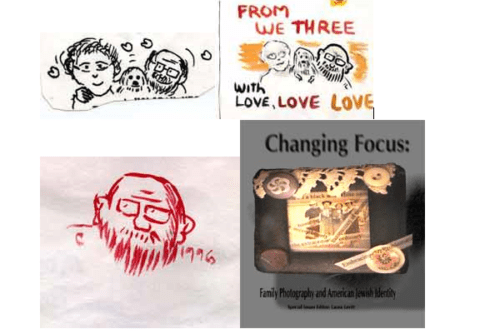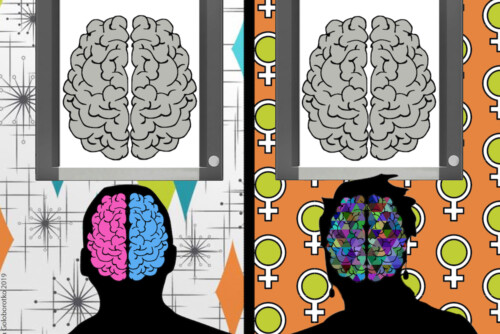In Chain of Love, a documentary film about Filipina domestic workers in Europe, Belen looks somberly at the camera as she discusses her decision to leave her home and her young son to find work in Europe. 1 She comments, “[I]t is hard here because I left my six-month-old baby behind to look after other children. But I had to do it for everyone, not just for myself. I had to put my feelings aside for them. I gave the love I felt for my own baby to the child here.” A wry expression appears on her face as she struggles not to cry, powerfully conveying the affective complexities for transnational migrants seeking financial resources abroad for themselves and often for families left behind. In conjunction with a growing transnational workers’ rights movement and scholarly attention to the gender inequities of globalization, recent documentary films such as Chain of Love are contributing to a greater awareness of how poor women of color are faring in contemporary global economies. These films pay particular attention to the social and affective impact of the chain of care, which immigration scholars define as the system of caretaking whereby migrants who leave home to work as domestics in other countries depend on family members or other domestic workers to care for their own families. 2
Documentary filmmakers seeking to portray the experiences of transnational domestic workers, many of whom face legal vulnerabilities as undocumented migrants, confront a familiar conundrum of whether to foreground women’s victimization or their self-empowerment. Although all of the films reviewed here provide insight into the range of domestics’ experiences, some more intentionally examine the exploitative work conditions for poor, and often quite young, women. Vulnerabilities resulting from the invisibility of domestic work are compounded for migrants who face language barriers, uncertain legal status, and dependency on employers or other powerbrokers. Contrasting this perspective are films that emphasize workers’ fortitude and determination to create a better life despite these challenges. We can best understand these representational strategies as different tactics within a feminist politics of visibility, rather than as ideological differences between the films. Such strategic emphases, however, risk filmic representations that reinscribe western racial narratives about Third World women, as well as reproduce heteronormative logics about gender, mothering, and caregiving practices.
Maid in Lebanon is a particularly effective example of a film that investigates the exploitative and abusive aspects of migrant domestic work. 3 At the outset, the narrative signals the social conditions of transnational mobility by following one woman’s journey from rural poverty in Sri Lanka to the affluent streets of urban Beirut. The film then features interviews with employment agencies and domestics who tell of a range of experiences, from supportive employers to stories of sexual and physical abuse. The narrative then expands to address the widespread occurrences of employers’ abusive treatment of domestic workers throughout the region. Maid in Lebanon concludes with a call for greater international cooperation between nations to enforce better conditions for domestic workers. Films like Maid in Lebanon serve an important advocacy agenda by exposing these highly exploitative gendered labor practices. 4 Visual and narrative strategies, however, end up uncritically reproducing a neoliberal rescue narrative about Third World women’s victimization. For instance, the visual emphasis in Maid in Lebanon on the exoticism and poverty of rural Sri Lanka resonates problematically with the ending image of a young woman optimistically preparing for her trip to the Middle East. This narrative framing suggests that only international intervention will protect these young women from continued abuse and violence. Missing, though, is a broader socio-economic perspective that could contextualize these transnational labor practices as well as workers’ own efforts to create better work conditions.
In contrast, Maid in America typifies films that emphasize transnational stories of gender empowerment in the face of separation from loved ones, long working hours, non-citizenship, and complex emotional relationships with employers. 5 The film portrays the work conditions and affective responses of Telma, Judith, and Eva, three Latina domestic workers in Los Angeles. Self-empowerment takes multiple forms, from finding a positive work situation to participating in labor activism. Eva, for instance, attends meetings at CHIRLA (Coalition for Humane Immigrant Rights of Los Angeles). She also performs in a play produced by a domestic workers cooperative, designed to empower workers to reject abuse by employers.
Beyond workplace empowerment, the film’s attention to the emotional lives of Eva, Telma, and Judith poignantly reveals some of the complexities of migrant domestic work. For instance, Eva receives a hug from her elderly employer when she arrives to clean her home. The older white woman’s loneliness, which appears mitigated by Eva’s generous caretaking, reverberates against a subsequent scene of Eva’s sadness at the news of her grandmother’s recent death in Mexico. Similarly, at the start of the film, Judith, who is pregnant with her fifth child and lives with her husband in Los Angeles, expresses her anguish at being separated from her other four children. Competing desires to improve their lives and a longing for her absent children results in Judith’s decision to leave her husband and return to Guatemala with her infant son. Visual contrasts between her living conditions in LA and the impoverished housing in Guatemala foreground the complex reasonings and excruciating choices immigrant women face. The focus on individual experiences both enriches and limits the insights offered by this fine film. For instance, Telma’s close relationship with her employers and their child, even participating in a big family gathering, provides insight into her motivations, resisting a simplistic victim narrative. At the same time, these personal stories do little to expose the structural forces constraining these migrant women’s options. This is especially apparent in the context of a comment made by Telma’s African American employer that domestic work was a “stepping stone” for his grandmother and other female relatives, and now for her. Despite the film’s stated critique of labor inequities and personal hardships, the lack of attention to U.S. immigration politics and neoliberal economic policies reshaping Central American economics leaves this narrative of progress only partially critiqued.
- Chain of Love. Dir. Marije Meerman. First Run/Icarus Films, 2001.[↑]
- See for example: Nicole Constable, Maid to Order in Hong Kong: Stories of Filipina Workers (Ithaca, NY: Cornell University Press, 1997); Barbara Ehrenreich and Arlie Hochschild, eds., Global Woman: Nannies, Maids and Sex Workers in the New Economy (New York: Metropolitan Books, 2000); and Rhacel Parreñas, Servants of Globalization: Women, Migration and Domestic Work (Palo Alto, CA: Stanford University Press, 2001).[↑]
- Maid in Lebanon. Dir. Carol Mansour. Forward Productions, 2005. You can access the film online through EngageMedia.[↑]
- For another fine example of films in this group, see: Young and Invisible: African Domestic Workers in Yemen, Dir. Arda Nederveen, 2007. Human rights organizations like Eye to Eye with Child Labour (working with Save the Children-UK) have produced numerous videos featuring child domestic workers and the problems of trafficking. NGO-sponsored advocacy documentaries, however, are not considered in this review as they constitute an institutional practice different from independent filmmakers and thus merit a separate analysis.[↑]
- Maid in America, Dir. Anayansi Prado. Impacto Films, 2004.[↑]



